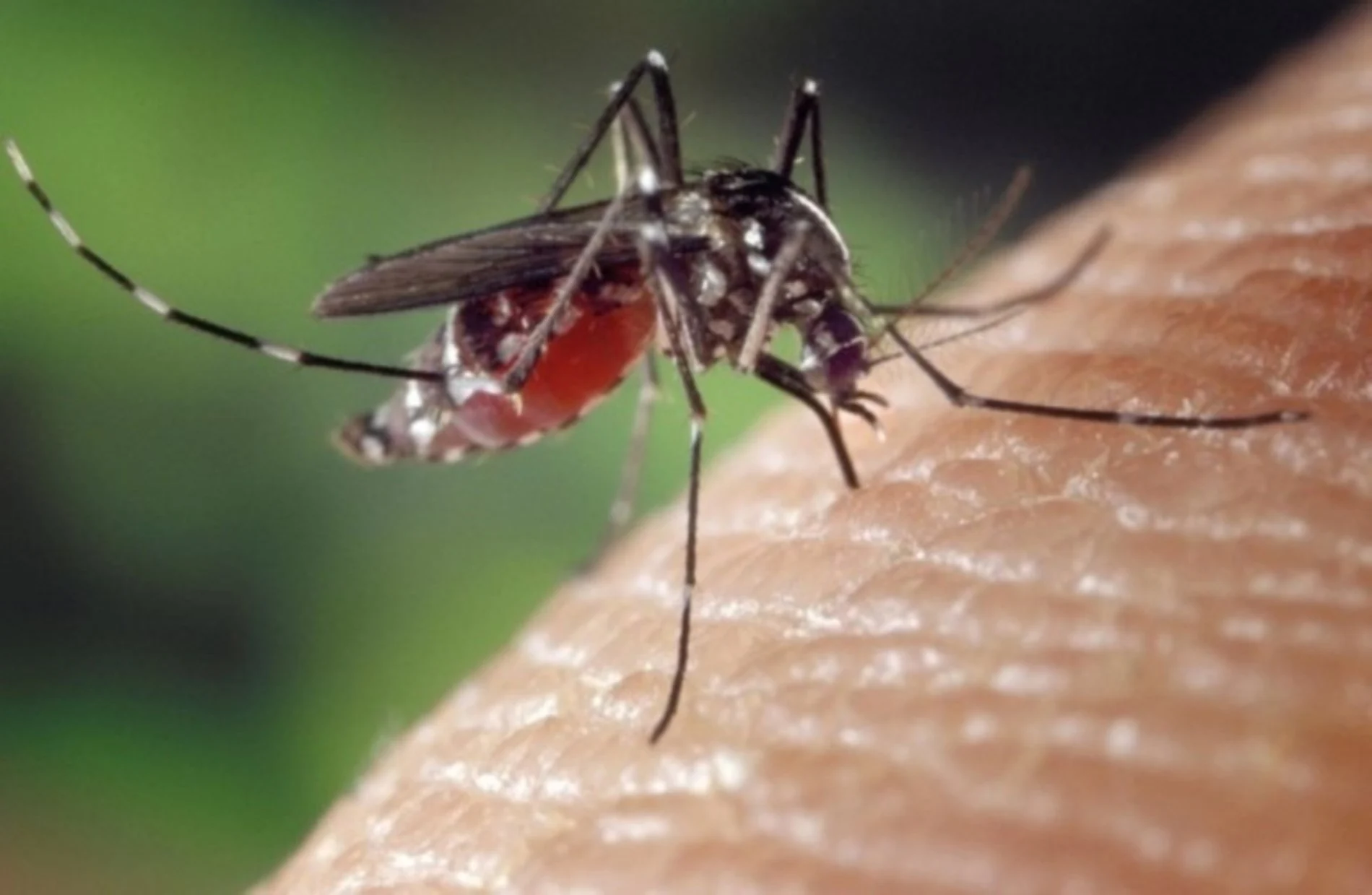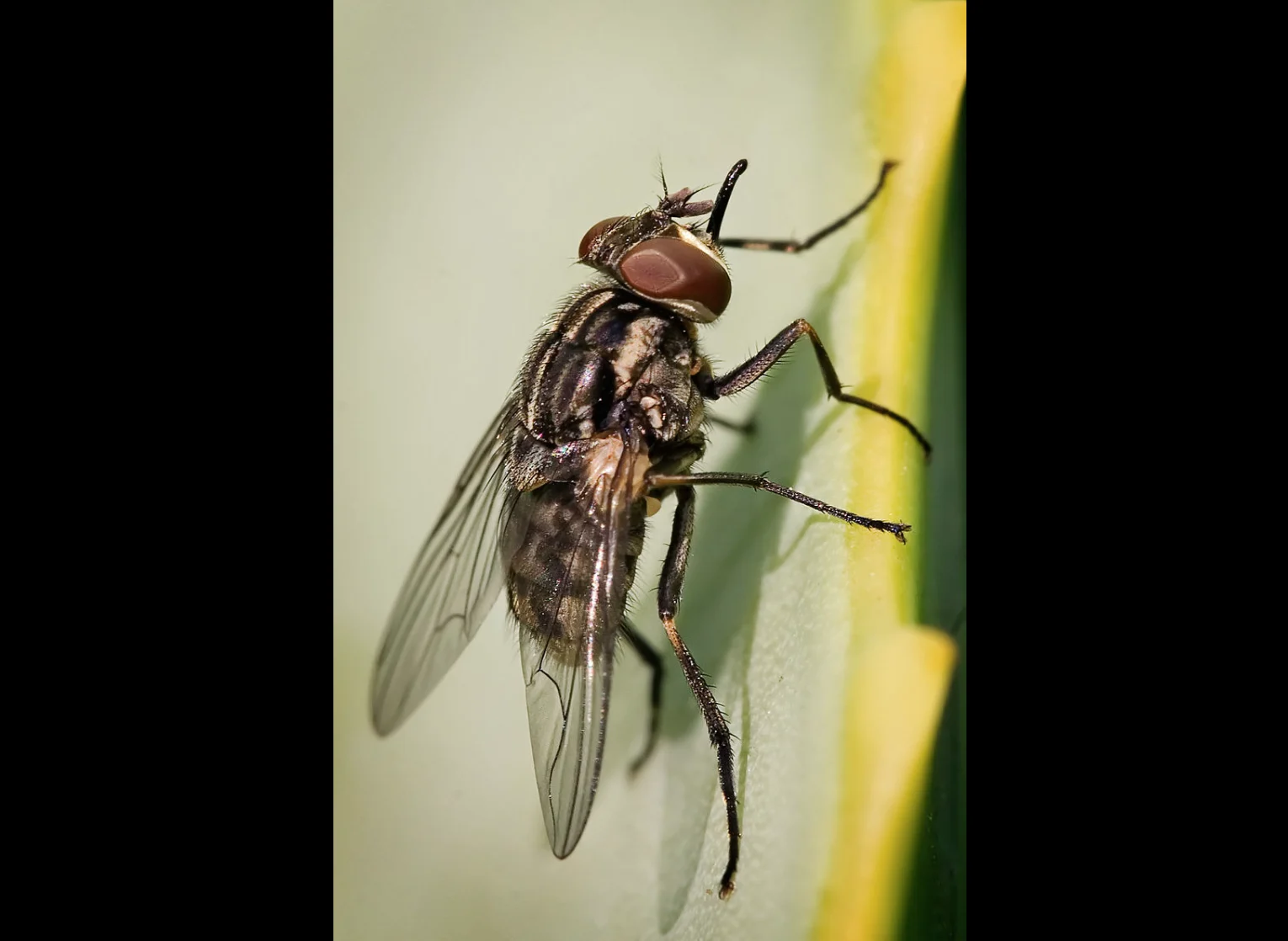
Stay itch-free: Become an ultimate bug repeller this summer
Groceries stowed, kids in bed, you take a moment on the deck to enjoy a spectacular sunset. But…nearby, a female mosquito has detected your breath. And she’s not the only one. The bloodthirsty gang follows your carbon dioxide emissions to their source, forcing you to retreat inside with several itchy puncture wounds.
We may go to the cottage to seek out wildlife, but while we’re there, some wildlife seeks us out. All of us have been victims of mosquitoes, blackflies, biting midges, stable flies, deer flies, or horseflies—the well-named “biting flies”—and perhaps even those bloodsucking hitchhikers, ticks. To arm you for battle: the dope on the bugs we love to hate.
Visit our Complete Guide to Summer 2019 for tips to plan for it and much more
WHAT BUGS US
Pain comes from the bite. Mosquitoes delicately saw into our skin and fastidiously suck blood through a straw-like mouthpart. Blackflies and biting midges snip our skin, which hurts more; stable flies stab their way in; and the champions of pain, deer and horseflies, macerate and cut with fearsome, weapon-like mouthparts.
The lasting itch comes from saliva, which contains an anticoagulant to keep blood flowing. Mosquitos inject it, and others slather it on the wound. Your immune system quickly attacks this foreign substance, raising an itchy bump. Ticks, as stealth artists, take the assault one step further, injecting an anaesthetic that conceals their presence until the “What’s on my neck?” moment. Dog ticks even secrete an adhesive that makes them harder to dislodge.
RELATED: 7 myths about mosquitoes debunked
WHY US?
Mosquitoes and the other biting flies prefer flower nectar; however, they need protein from blood to produce eggs, so adult female mosquitoes, blackflies, stable flies, biting midges, horseflies, deer flies, and ticks search out humans and other animals. Male stable flies do consume blood, as do male ticks (and immature ticks of both sexes).
While carbon dioxide, body heat, and skin odour are major draws for most biting flies, motion also lures them in, especially horseflies and deer flies, which use their huge eyes to detect action from a distance. They are particularly drawn to shiny, moving objects (think swimmers). Not ticks: These hitchhikers climb high on vegetation, raise their front legs, and hook onto us as we brush by them.
These clans of vampires transmit diseases including yellow fever, malaria, and river blindness, which in many parts of the world cause death and misery. Canada is a relatively safe zone, but it’s not entirely without risk.
“I think West Nile virus is the most important concern here in Canada,” says Doug Campbell, a pathologist at the Canadian Cooperative Wildlife Health Centre.
West Nile virus is transmitted by the bite of an infected mosquito, and its symptoms in humans are either so mild that it goes undetected, or it manifests as flu-like; extreme cases are very rare, but the virus may lead to debilitation or death. Its territory has spread rapidly since the virus’s arrival in Canada in 2001, to include much of Ontario, parts of the Prairies and southern Quebec, and even extends into Alberta and BC. Everyone in affected areas is at risk of exposure, but the likelihood of having the more serious health effects is very slim.
“There’s no preventive, no vaccine, so all you can do is reduce your exposure to mosquitoes,” says Campbell.
Another risk is Lyme disease, an illness caused by bacteria transmitted by the blacklegged, or deer, tick. Latching onto and sucking blood from a passing animal, usually a bird or a mammal, the nymph or adult tick can acquire the bacteria or, if already infected, pass it on.
The range of this tick is spreading, perhaps aided by global warming, but family pets and wildlife, especially birds, also help establish new focal points for Lyme disease by carrying ticks to new areas. Southern parts of BC, Manitoba, Ontario, Quebec, and New Brunswick, and various areas in Nova Scotia have reported Lyme disease. Early warning signs include joint pain, general flu-like symptoms, and sometimes a red rash around the bite (often in the shape of a bull’s eye). Treatment with antibiotics is usually effective. Untreated, the disease may progress to include arthritis, joint swelling, cardiac illness, or cognitive disorders due to infection of the central nervous system.
“Typically, it’s not considered to be fatal,” says Robbin Lindsay, a research scientist with the Public Health Agency of Canada.
CANDLES VS. BUG SPRAY: EXPERT WEIGHS-IN ON EFFECTIVENESS IN YOUR YARD
1. Black flies
A closer look: Black flies are compact, less than half the length of most mosquitoes, and have a hump-backed profile.
Action time: They usually emerge in mid-spring and last through June. Main biting times are early in the morning and late in the afternoon, peaking towards sunset.
Avoid the bite: DEET repellents work but won’t keep them from swarming around your head. A screened bug hat is ideal (any hat helps). A steady breeze, even a slight one, deters these poor flyers.
Amazing fact: Numbers of black fly larvae in streams can be staggering, up to 100,000 per square metre at lake outlets.
2. Stable flies
A closer look: If you are bitten by what seems to be a housefly, likely at the ankles, you’ve met a stable fly. To kill one of these frustrating masters of agility, you have to swat hard enough to hurt yourself.
Action time: Stable flies peak during the warmest part of summer. They like the bright light and heat of midday.
Avoid the bite: These pests are only somewhat deterred by DEET repellents. Covering bare feet and legs helps, though these biters can pierce thin clothing. They breed in manure piles on farms, but also along beaches in wet, rotting vegetation.
Amazing fact: They are blamed for nearly $1 billion in overall annual economic loss to North American livestock producers; a density of one fly per cow can drop milk output.

Image: An adult stable fly, Stomoxys calcitrans, on an aloe vera leaf. Specimen is approx 10mm in length. Taken in Swifts Creek, Victoria in February 2007. Courtesy: Wikipedia/Creative Commons
3. Deer flies and horseflies
A closer look: If a fly bites you, and you say “Ouch!” loud enough to be heard across a small lake, chances are it’s a deer fly or a horsefly. Deer flies are just larger than houseflies and have patterned wings. Horseflies are bigger, up to three centimetres long, and they usually have clear or uniformly coloured wings. After a swatting victory, it’s worth looking into your hunter’s beautiful eyes. Deer fly eyes are often iridescent red and green, while horsefly eyes may be striped with bright green.
Action time: Early summer is peak time, and the majority of species are most active a few hours after sunrise and before sunset.
Avoid the bite: DEET repellents give minimal protection. Since deer flies often bite the head area, wear a hat and cover your neck. Fortunately, they won’t bite inside a tent or a building. Unfortunately, both deer flies and horseflies have a particular love for windsurfers and swimmers.
Amazing fact: The huge compound eyes of a horsefly may contain 10,000 photoreceptor units, or simple eyes, which gives them superior vision.
RELATED: 5 little-known facts pet owners should know about this tick season
4. Mosquitoes
A closer look: Mosquitoes are delicate, with a long, slender abdomen and tube-like mouthparts for sipping nectar or, if they are female, blood. Our first alert may be a whining, dentist’s-drill-like sound, made by the wings of both sexes, beating from 300 to 800 times per second. Males are drawn in by the sound as they search for a mate.
Action time: They are out from mid-spring to autumn frost, peaking in late spring; most are active around dawn and dusk.
Avoid the bite: DEET-based repellents work; citronella-containing liquids work for short periods. A steady breeze (more than 15 km/h) keeps them away, so fans do help. Reducing non-natural breeding habitat around the cottage is wise, especially to avoid West Nile virus; flip pails and other containers so they don’t collect rainwater, and clear plugged eavestroughs.
RELATED: Hate mosquitoes? Here's how techno music can save your summer
Amazing fact: Malaria transmission makes mosquitoes, after humans, the most dangerous animals on earth, killing about 600,000 people a year. A temperate type of malaria once existed in Canada, mostly in southern Ontario and Quebec. With window glass and screens, the use of quinine, and the draining of marshes (prime habitat for the mosquito genus that carries malaria—Anopheles) for agriculture, malaria was elim-inated from most of North America around 1900. Now, our only cases are travellers returning from hot zones, but transmitting mosquitoes still exist in Canada, so outbreaks could occur again.
WATCH BELOW: THIS IS WHY THEY LOVE YOU - HOW TO REALLY AVOID MOSQUITOES
5. Ticks
A closer look: Ticks resemble flattened, miniature crabs. You are most likely to find one when it is attached to your body or clothing (or dog). Adults have eight legs; they’re arachnids, not insects.
Action time: Ticks may hitchhike at any time—day or night. The time of year varies by species; American dog tick adults are more plentiful from spring to early summer, and adult blacklegged, or deer, ticks (the ones that transmit Lyme disease) peak in the fall. In the west, you’ll encounter the western blacklegged tick in areas of southern and coastal BC, and you’ll find the Rocky Mountain wood tick adult from March to June.
Avoid the bite: Stick to trails and more open areas and tuck in clothing. Strong, DEET-based repellent can be sprayed on pants, socks, and shoes. Check your clothing and body daily. Remove ticks by seizing the head as close to your skin as possible with blunt tweezers and pulling. Removed early, there is little chance that ticks will transmit disease, but you should wash and disinfect the area of the bite. If the tick is removed after more than 24 hours, save it and note the date and location, says Robbin Lindsay of the Public Health Agency of Canada; if you develop symptoms in the next one to two weeks (look for a rash—bull’s eye or otherwise), see your doctor, taking the tick for identification. Systemic symptoms—including multiple rashes, a low-grade fever, neck stiffness, fatigue, and severe headaches—can appear two to six weeks after a bite from an infected tick, even if no rash developed earlier on.
Amazing fact: After a full blood meal, a tick may be 30 to 60 times its starting size.
6. Biting midges
A closer look: If an insect bites you and you can’t see it, it’s likely a tiny biting midge (often called a “no-see-um”). Biting midges are usually barely more than a millimetre in length, but similar to the blackfly in shape.
Action time: Mostly around dawn and dusk, especially in mid- to late summer.
Avoid the bite: DEET-based repellents work. Windy conditions will reduce bites from these weak flyers.
This article, written by Dan Schneider, was originally published for Cottage Life










